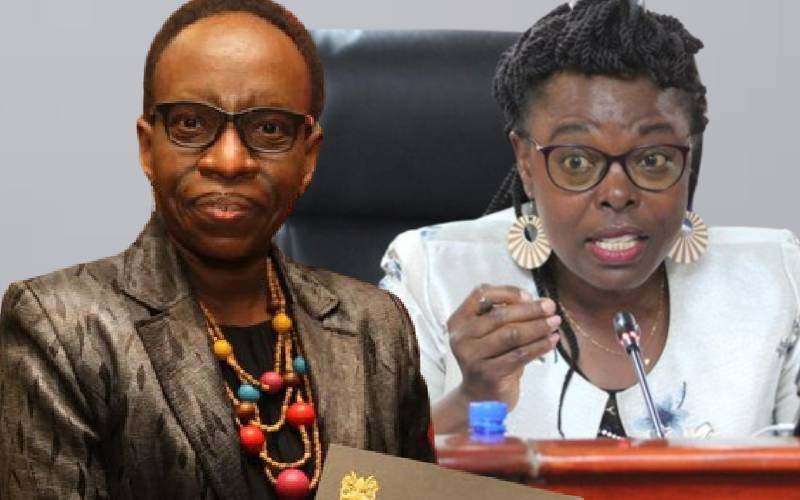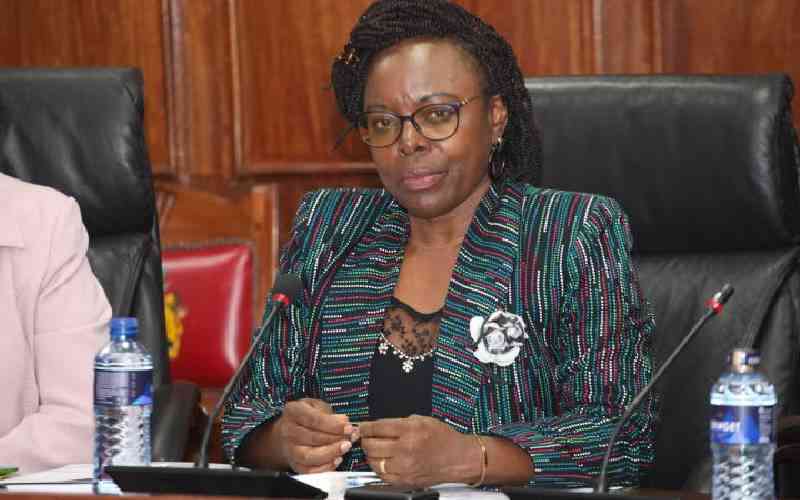
All too often, well-intentioned development projects have been undermined by inefficiency, wrong-headed politics and bad priorities.
According to the Annual Implementation Report released by the Office of the Controller of Budget, county budgets amounted to Sh367.44 billion with the best performers in development expenditure being Bomet, Mombasa, Wajir and Murang’a. Makueni, Embu and Nakuru were named among the worst performers.
It is crucial to enhance the effectiveness of the devolved units’ spending on development. This is why the Controller of Budget’s office came up with an index to measure the absorption rate of funds allocated for development and at 81.1 per cent, Murang’a is among the best performing in this aspect.
The 34-acre piece of land situated along the Thika Superhighway, which is the point of contention, is near Thika town and about 3 km from Kenol. According to documents lodged at the lands registry, the county’s administration purchased the land in 2014 at a cost of Sh340 million, translating to Sh10 million per acre.
To the uninformed, that amount may seem exorbitant for the utility, but a closer look at its current valuation and activities happening within five-kilometre radius of the property indicate the land originally meant for development of offices and an industrial park was a good value acquisition.
It falls within the Nairobi metropolis and is within a radius of three kilometres from the planned Metropol railways station, planned Murang’a University constituent college and the Thika Greens, which is a premier property investment vehicle whose mission is to develop high-quality residential communities with high returns on investment.
Because of these activities, land hawks and property developers are scrambling for land in the vicinity, making it nearly impossible to locate more than two-acres of land for development.
The reason I am dwelling on Murang’a and its 2014 acquisition is that it makes a good case study of everything wrong with our body politic and how exceptional development ideas can sometimes be sacrificed on the altar of big political egos.
Recently, Murang’a governor Mwangi Wa Iria seemed to be caving in to the propaganda when he said he would consider selling the piece of land, ostensibly to please those who are against the project.
Granted, the 34-acre land would fetch over half a billion shillings and a handsome Sh160 million profit to boot for the Murang’a people, but the decision would be anti-development. It is cowardly to dispose a pricey jewel to appease your political opponents.
In October 2013, the Ministry of Lands gave the land a value of Sh340 million, while a private valuation showed it was worth Sh370 million. Development projects will always attract politics and it is the duty of public servants like Wa Iria to defend their implementation.
The fact that the Office of the Controller of Budget has cited it as a good value investor should spur the county to protect its resources and put them to good use. Unfortunately, in our country, the public sector cannot, in general, be relied upon to take the best action on behalf of the citizens or reform itself in isolation. The pressure of informed domestic public opinion is therefore a crucial stimulus.
If present, this would help strengthen the resolve of governors like Wa Iria not to succumb to negative pressures. It would also help push the governors of counties like Makueni, Embu and Nakuru that were named amongst the worst performers in the absorption of development funds to invest public money in good courses instead of returning billions of shillings meant for development to the Treasury every year.
A key missing ingredient in the formation of this kind of public opinion is a strengthened role for independent watchdog groups like Bunge La Mwananchi, home-grown within counties, and ferociously committed to opening up Government budgets and policies for public review and discussion.
Stay informed. Subscribe to our newsletter
 The Standard Group Plc is a
multi-media organization with investments in media platforms spanning newspaper
print operations, television, radio broadcasting, digital and online services. The
Standard Group is recognized as a leading multi-media house in Kenya with a key
influence in matters of national and international interest.
The Standard Group Plc is a
multi-media organization with investments in media platforms spanning newspaper
print operations, television, radio broadcasting, digital and online services. The
Standard Group is recognized as a leading multi-media house in Kenya with a key
influence in matters of national and international interest.
 The Standard Group Plc is a
multi-media organization with investments in media platforms spanning newspaper
print operations, television, radio broadcasting, digital and online services. The
Standard Group is recognized as a leading multi-media house in Kenya with a key
influence in matters of national and international interest.
The Standard Group Plc is a
multi-media organization with investments in media platforms spanning newspaper
print operations, television, radio broadcasting, digital and online services. The
Standard Group is recognized as a leading multi-media house in Kenya with a key
influence in matters of national and international interest.










